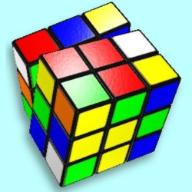Please help. I don't understand this question. https://s1.postimg.org/857bllapcf/123.png?
2017-10-02 10:11 pm
why the value of the common difference is 3.5? Does this mean that the common difference is 3.5?
回答 (3)
2017-10-02 10:18 pm
✔ 最佳答案
An arithmetic sequence is a sequence of numbers where two neighboring numbers differ only by a constant value.This constant value is the common difference (hm)
You get one number by taking the previous number and adding the common difference to it.
If we went from 1st term to 9th term. How many times did we have to add the common difference?
9 - 1 = 8
That took us from -12 to 16, or an increase of 28.
So 8 common differences make 28.
28 / 8 = 3.5.
2017-10-02 10:16 pm
The first term, T(1) = a = -12
The ninth term, T(9) = 16
The number of terms, n = 9
The common difference, d = ?
T(9) = 16
a + (9 - 1)d = 16
-12 + 8d = 16
8d = 28
d = 28/8
d = 3.5
The value of the common difference = 3.5
OR: The common difference = 3.5
The ninth term, T(9) = 16
The number of terms, n = 9
The common difference, d = ?
T(9) = 16
a + (9 - 1)d = 16
-12 + 8d = 16
8d = 28
d = 28/8
d = 3.5
The value of the common difference = 3.5
OR: The common difference = 3.5
2017-10-02 10:18 pm
The 1st term is -12:
a[1] = -12
The 9th term is 16:
a[9] = 16
First find that difference by subtracting the 1st term from the 9th term:
a[9] - a[1] = 16 - (-12) = 28
That's a change of 28 over *8* terms (from 1 to 9 --> 9-1 = 8). The differences are all equal (hence the term "common" difference) so we can divide the total difference (28) by 8.
28/8
= 7/2
= 3½
Answer:
Yes, the common difference is 3½ (or 3.5).
The full set of terms from 1 to 9 would be:
-12, -8½, -5, -1½, 2, 5½, 9, 12½, 16, ...
a[1] = -12
The 9th term is 16:
a[9] = 16
First find that difference by subtracting the 1st term from the 9th term:
a[9] - a[1] = 16 - (-12) = 28
That's a change of 28 over *8* terms (from 1 to 9 --> 9-1 = 8). The differences are all equal (hence the term "common" difference) so we can divide the total difference (28) by 8.
28/8
= 7/2
= 3½
Answer:
Yes, the common difference is 3½ (or 3.5).
The full set of terms from 1 to 9 would be:
-12, -8½, -5, -1½, 2, 5½, 9, 12½, 16, ...
收錄日期: 2021-04-24 00:42:44
原文連結 [永久失效]:
https://hk.answers.yahoo.com/question/index?qid=20171002141124AA2UnwT

